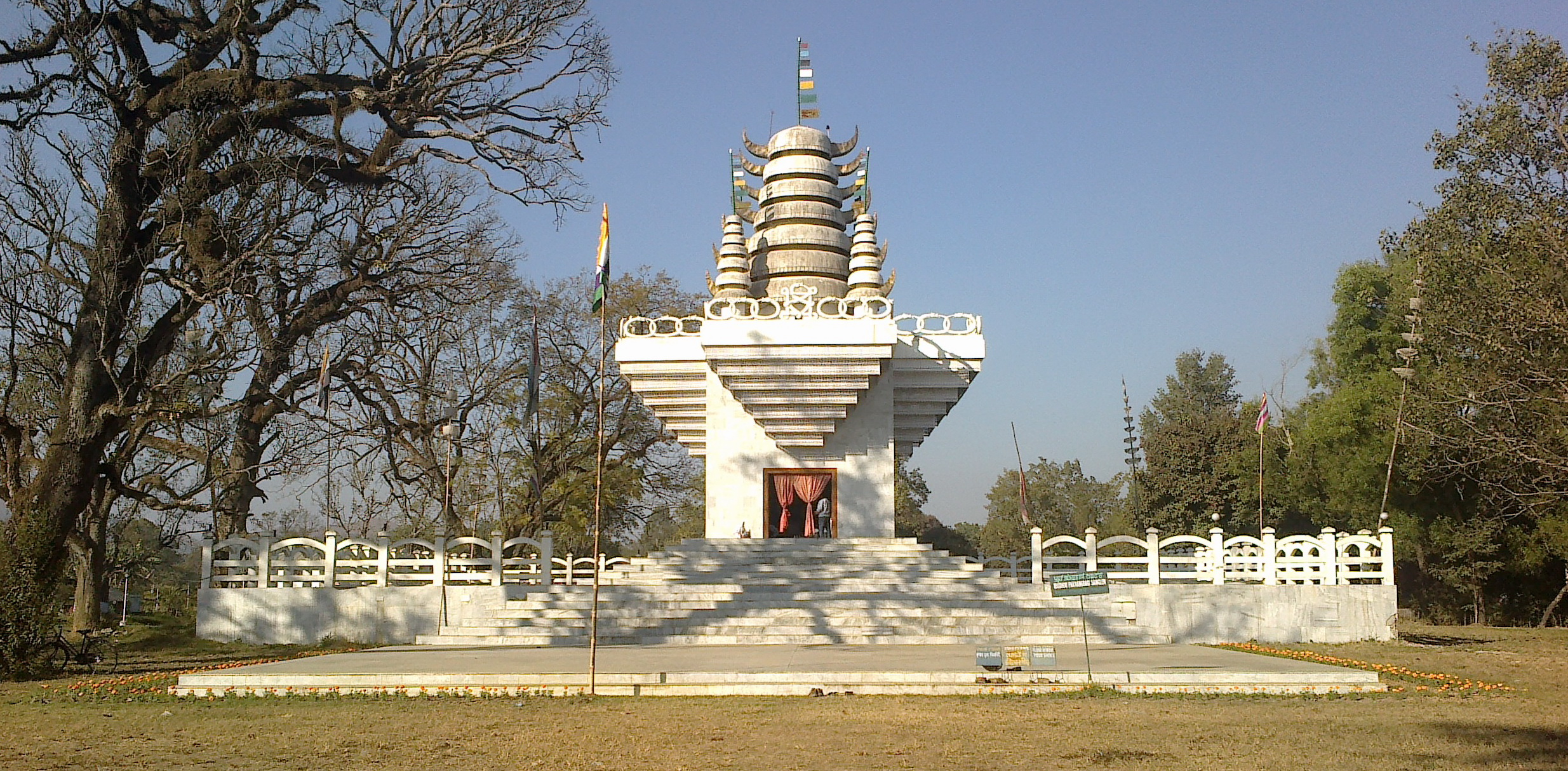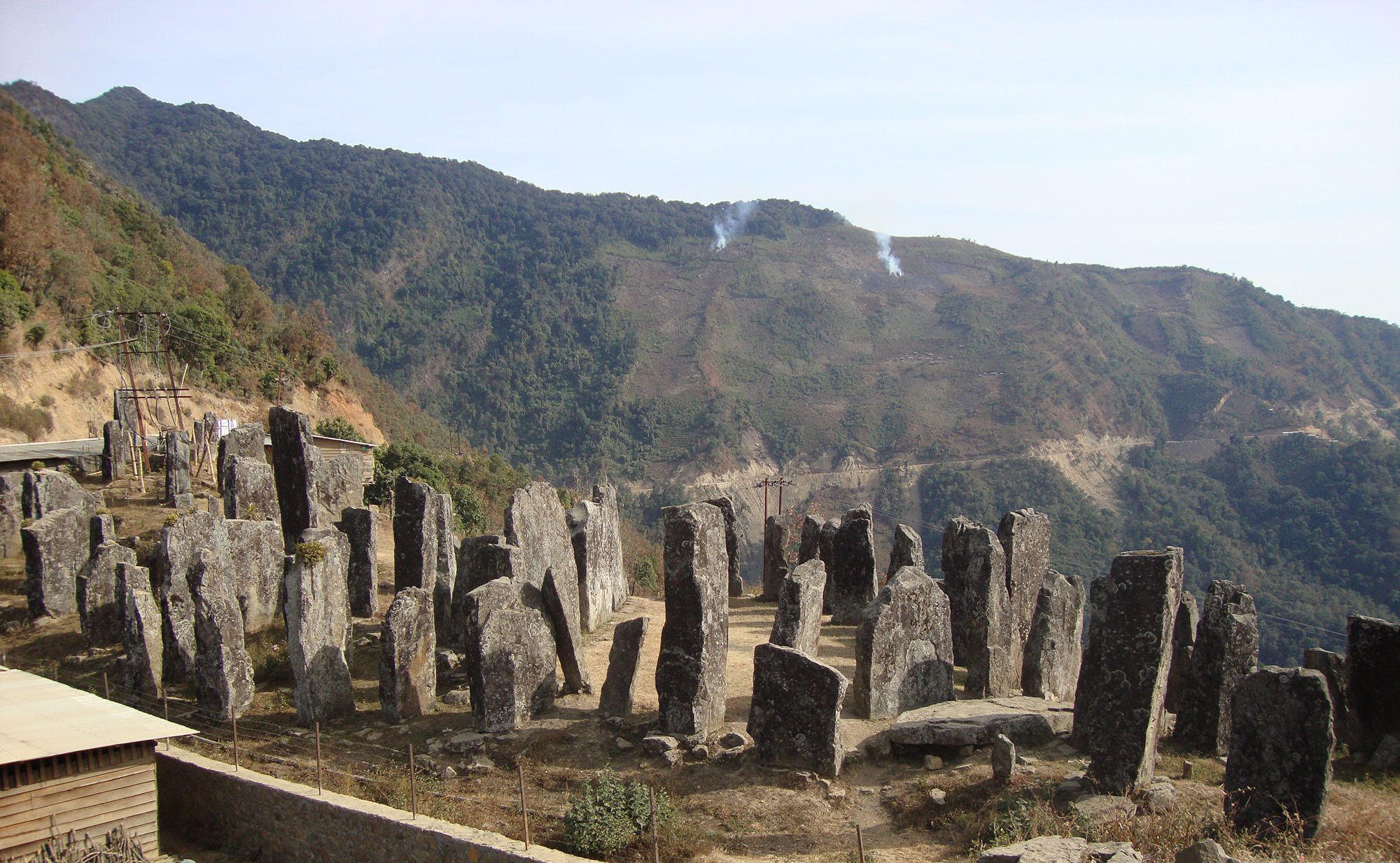|
Tangcha Lee La Pakhangpa
Tangja Leela Pakhangba () (1445 BC-1405 BC) is the first king of Ancient Manipur ( Antique Kangleipak) civilization. He is the father of King Ningthou Kangba (1405 BC-1359 BC) and the grandfather of King Maliyapham Palcha ( Koi Koi) (1359 BC-1329 BC). He is the consort of Queen Sinbee Leima, the daughter of the chief of the Leihou tribe. The history of Manipur The history of the Indian state of Manipur is reflected by archaeological research, Meitei mythology, mythology and recorded history, written history. Historically, Manipur was an independent sovereign kingdom ruled by Ningthouja dynasty, Meitei ... accounts for many kings with the name "Pakhangba", more or less having reference to God Pakhangba, among which ''"Tangja Leela Pakhangba"'' is one. Other websites * * References {{Reflist Kings of Ancient Manipur Meitei people Pages with unreviewed translations ... [...More Info...] [...Related Items...] OR: [Wikipedia] [Google] [Baidu] |
Ancient Kangleipak
Kangleipak was an ancient, lesser known civilisation, consisting of the modern day Manipur, Manipur, India which is still known to some residents as Kangleipak, and other neighbouring regions. The Kangla served as the foremost capital city of this realm from the 15th century BCE, up to medieval times. History The Kingdom of Kangleipak (present-day Manipur, India) was an independent monarchy in Northeast India with a rich cultural and political history. Traditionally believed to have been founded in 33 CE by King Nongda Lairen Pakhangba, Kangleipak was ruled by the Meitei kings, who established a distinct administrative system and patronized the indigenous Sanamahism religion. Throughout its history, Kangleipak experienced periods of internal consolidation, external conflicts, and cultural exchanges with neighboring regions, including Burma (Myanmar) and Assam. The kingdom saw a significant transformation during the reign of Garibniwaj (1709–1748), who expanded its territory ... [...More Info...] [...Related Items...] OR: [Wikipedia] [Google] [Baidu] |
Monarchy
A monarchy is a form of government in which a person, the monarch, reigns as head of state for the rest of their life, or until abdication. The extent of the authority of the monarch may vary from restricted and largely symbolic (constitutional monarchy), to fully autocratic (absolute monarchy), and may have Political representation, representational, Executive (government), executive, legislative, and judicial functions. The Order of succession, succession of monarchs has mostly been Hereditary monarchy, hereditary, often building dynasties; however, monarchies can also be elective monarchy, elective and Self-proclaimed monarchy, self-proclaimed. Aristocracy (class), Aristocrats, though not inherent to monarchies, often function as the pool of persons from which the monarch is chosen, and to fill the constituting institutions (e.g. Diet (assembly), diet and Royal court, court), giving many monarchies oligarchic elements. The Legitimacy (political)#Monarchy, political legitim ... [...More Info...] [...Related Items...] OR: [Wikipedia] [Google] [Baidu] |
Ningthou Kangba
Ningthou Kangba (; 1405 BC-1359 BC) was a ruler of Ancient Kangleipak (early Manipur). He is traditionally seen as having invented Sagol Kangjei, the earliest form of the modern day polo sports. He was the son of King Tangja Leela Pakhangba (1445 BC-1405 BC) and Queen Sinbee Leima. He was the consort of Queen Leima Taritnu, daughter of a king named Nongpok Ningthou of the Nongmaiching Hill in the east of Imphal. Origin According to the Ningthou Kangbalon, an ancient historical account of his family, King Kangba was born in a cave in the Mount Koubru in northern Manipur. Some historians thought that he belonged to the house of the Salang Leishangthem dynasty. However, some thought that he belonged to the house of the Khaba Nganba dynasty. Heritage site In 2018, the Government of Manipur proclaimed that a heritage site will be developed in memory of the king in the Kangmong village, to promote tourism. Ningthou Kangbalon The Ningthou Kangbalon () is ... [...More Info...] [...Related Items...] OR: [Wikipedia] [Google] [Baidu] |
Tang Dynasty
The Tang dynasty (, ; zh, c=唐朝), or the Tang Empire, was an Dynasties of China, imperial dynasty of China that ruled from 618 to 907, with an Wu Zhou, interregnum between 690 and 705. It was preceded by the Sui dynasty and followed by the Five Dynasties and Ten Kingdoms period. Historians generally regard the Tang as a high point in Chinese civilisation, and a Golden age (metaphor), golden age of cosmopolitan culture. Tang territory, acquired through the military campaigns of its early rulers, rivalled that of the Han dynasty. The House of Li, Li family founded the dynasty after taking advantage of a period of Sui decline and precipitating their final collapse, in turn inaugurating a period of progress and stability in the first half of the dynasty's rule. The dynasty was formally interrupted during 690–705 when Empress Wu Zetian seized the throne, proclaiming the Wu Zhou dynasty and becoming the only legitimate Chinese empress regnant. The An Lushan rebellion (755 ... [...More Info...] [...Related Items...] OR: [Wikipedia] [Google] [Baidu] |
Shang Dynasty
The Shang dynasty (), also known as the Yin dynasty (), was a Chinese royal dynasty that ruled in the Yellow River valley during the second millennium BC, traditionally succeeding the Xia dynasty and followed by the Western Zhou dynasty. The classic account of the Shang comes from texts such as the '' Book of Documents'', '' Bamboo Annals'' and '' Shiji''. Modern scholarship dates the dynasty between the 16th and 11th centuries BC, with more agreement surrounding the end date than beginning date. The Shang dynasty is the earliest dynasty within traditional Chinese history that is firmly supported by archaeological evidence. The archaeological site of Yinxu, near modern-day Anyang, corresponds to the final Shang capital of Yin. Excavations at Yinxu have revealed eleven major royal tombs, the foundations of former palace buildings, and the remains of both animals and humans that were sacrificed in official state rituals. Tens of thousands of bronze, jade, ... [...More Info...] [...Related Items...] OR: [Wikipedia] [Google] [Baidu] |
Meiteism
The 'Meitei Laining''''' is a term used to describe the original animistic religious belief system of the Meitei ethnicity in particular. It refers to the pre-Hindu faith of the Meitei ethnic group. It incorporates various teachings from the Meitei scriptures. Meitei Laining is a large facet of the collective synthesis of beliefs known as Sanamahism. Though Meitei Laining is treated as another name of Sanamahism, the latter term has wider coverage of the traditional beliefs and practices of the hill tribesman communities also. The term was used during the Meitei revivalism movement to promote the ethnic religion of the Meitei people explicitly. In every Meitei household, there is a sacred abode of God Sanamahi, called the Sanamahi Kachin. It is an analogous term to Koshinto being used as a term for primitive Shinto , also called Shintoism, is a religion originating in Japan. Classified as an East Asian religions, East Asian religion by Religious studies, scholars of rel ... [...More Info...] [...Related Items...] OR: [Wikipedia] [Google] [Baidu] |
Sanamahism
Sanamahism , also known as Meiteism , or Lainingthouism is an ethnic religion of the Meitei people of Manipur, in Northeast India. It is a polytheistic religion and is named after Lainingthou Sanamahi, one of the most important deities of the Meitei faith. Sanamahi is the eldest son of the supreme god Sidaba Mapu and the supreme goddess Leimarel Sidabi. Traditionally every Meitei household, irrespective of the religion, worships Sanamahi and Leimarel Sidabi. Sanamahism does not have a religious head but has a body, the Maru Loishang, that oversees the main religious activities and governs all affairs of the religion, including the conduct of priest and priestess. The Maru Loishang also acts a court for religious disputes. There are three main departments under the Manu Loishang, namely, the Amaiba Loishang, the Pena Asheiba Loishang, and the Amaibi Loishang. These departments have existed since the reign of King Meidingu Hongnemyoi Khunjao Naothingkhong of Manipur in 662 ... [...More Info...] [...Related Items...] OR: [Wikipedia] [Google] [Baidu] |
Maliyapham Palcha
Maliyapham Palcha (1359 BC-1329 BC), also known as Mari Ya Phambal Cha or Koi Koi, is a king of Ancient Manipur ( Antique Kangleipak) kingdom. He is the successor and one of the nine sons of King Ningthou Kangba Ningthou Kangba (; 1405 BC-1359 BC) was a ruler of Ancient Kangleipak (early Manipur). He is traditionally seen as having invented Sagol Kangjei, the earliest form of the modern day polo sports. He was the son of King Tangja Leela Pakh ... (1405 BC-1359 BC) as evident in the Ningthou Kangbalon. He ascended the throne at the age of twenty five and introduced a calendar system called the Mari-Fam or Maliyapham (later known as the Meetei calendar). He was succeeded by Other website Traditional Customs and Rituals of Northeast India: Arunachal Pradesh, meghalaya, Manipur, Assam References {{Reflist Kings of Ancient Manipur Meitei people Pages with unreviewed translations ... [...More Info...] [...Related Items...] OR: [Wikipedia] [Google] [Baidu] |
History Of Manipur
The history of the Indian state of Manipur is reflected by archaeological research, Meitei mythology, mythology and recorded history, written history. Historically, Manipur was an independent sovereign kingdom ruled by Ningthouja dynasty, Meitei dynasty but at different point of time it was invaded and rule over by other state and authority. The Manipur (princely state)#Kangleipak State, Kangleipak State developed under King Loiyumba with its first written constitution in the early 12th century. Manipur (princely state), Manipur under the 18th-century king Pamheiba saw the legendary burning of sacred scripture. Manipur became a princely state under British Raj, British rule in 1891 after the Anglo-Manipur War, Anglo-Manipur war, the last of the independent states to be incorporated into British Raj as a princely state. During the Second World War, Manipur (princely state), Manipur was the scene of Operation U-Go, battles between Imperial Japanese Army, Japanese and Allied forces ... [...More Info...] [...Related Items...] OR: [Wikipedia] [Google] [Baidu] |
Kings Of Ancient Manipur
Kings or King's may refer to: *Kings: The sovereign heads of states and/or nations. *One of several works known as the "Book of Kings": **The Books of Kings part of the Bible, divided into two parts **The ''Shahnameh'', an 11th-century epic Persian poem **The Morgan Bible, a French medieval picture Bible **The Pararaton, a 16th-century Javanese history of southeast Asia *The plural of any king Business *Kings Family Restaurants, a chain of restaurants in Pennsylvania and Ohio *Kings Food Markets, a chain supermarket in northern New Jersey * King's Favourites, a brand of cigarettes *King's Variety Store, a chain of stores in the USA *King's (defunct discount store), a defunct chain of discount stores in the USA Education *King's College (other), various colleges * King's School (other), various schools * The King's Academy (other), various academies Electoral districts *King's (New Brunswick federal electoral district) (1867–1903) *Kings (Nova Scoti ... [...More Info...] [...Related Items...] OR: [Wikipedia] [Google] [Baidu] |




